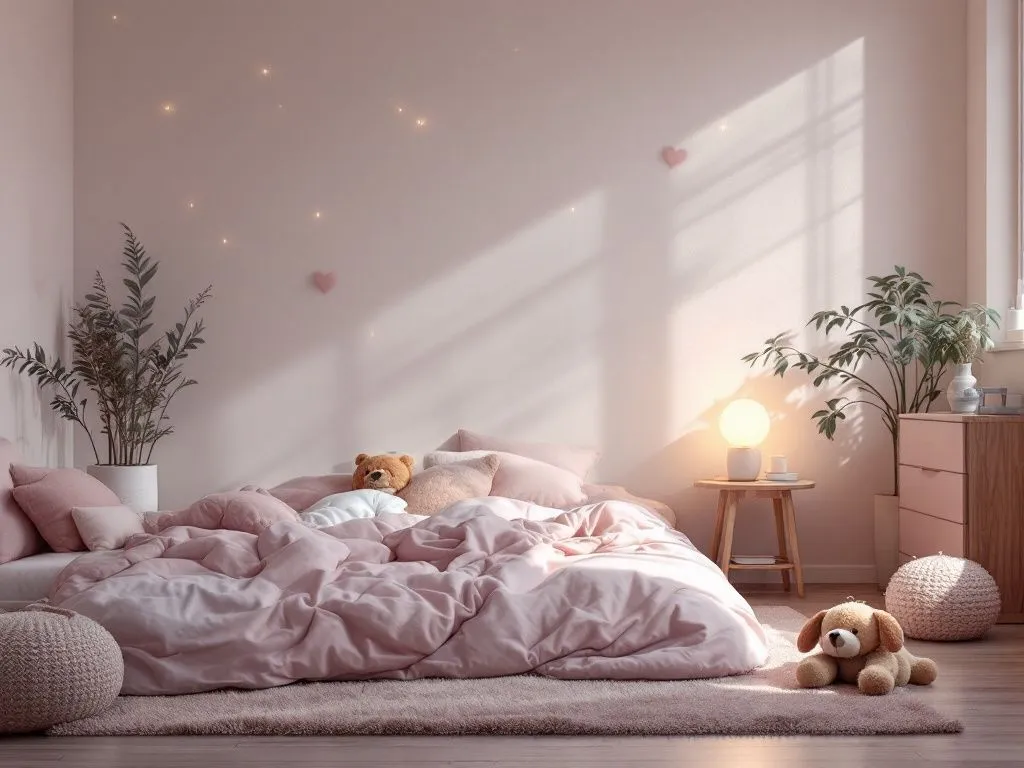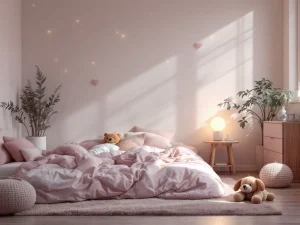
Ever crawl into bed feeling completely wired, even though you’re exhausted? Or maybe you lie there, acutely aware of every faint hum, every seam in your pajamas, the slight gap in the curtains letting in a sliver of light? For individuals with sensory processing differences—common in those with autism, ADHD, anxiety, or even just high sensitivity—a typical bedroom can feel less like a sanctuary and more like a minefield of overstimulation.
But here’s the good news. Your bedroom can be transformed. It can become a true retreat, a place where your nervous system finally, blissfully, gets to power down. Let’s dive into how to create a sensory-friendly bedroom environment that feels like a deep, calming breath for your senses.
Why a Sensory-Friendly Bedroom Isn’t Just a Trend
Sleep is non-negotiable. It’s the foundation for everything—mood, focus, health. But for a brain that struggles to filter sensory input, the path to restful sleep is often blocked. A sensory-friendly bedroom is a proactive design solution. It’s about controlling your environment so your brain doesn’t have to work overtime trying to do it for you. Think of it as building a “sensory diet” for your living space, one that deliberately nourishes calm and minimizes stress.
The Pillars of a Sensory Sanctuary
We can break this down into the main senses. The goal isn’t to eliminate all sensation, but to curate it. To make it predictable and peaceful.
Sight: Mastering the Light and Visual Field
Visual clutter is mental clutter. It’s that simple. A room bursting with colors, patterns, and scattered objects can keep a sensitive mind racing.
Actionable Tips:
- Embrace a Soothing Color Palette: Ditch the bright, stimulating colors. Opt for muted, earthy tones like soft sage, warm taupe, pale blue, or a gentle gray. These colors are naturally calming and signal to your brain that it’s time to unwind.
- Invest in Blackout Solutions: This is a game-changer. Honestly, it might be the single most important change. Blackout curtains or blinds create a cave-like darkness that is essential for melatonin production. Look for ones that fit snugly against the window frame to block those sneaky light leaks.
- Minimize Visual Noise: Adopt a “clutter-free” mantra. Use closed storage like baskets, bins, and drawers to tuck away everyday items. Keep surfaces clear. A clean, simple visual landscape is incredibly restful.
Sound: Taming the Auditory Chaos
From a dripping faucet to distant traffic, unpredictable sounds are the arch-nemesis of sensory relaxation. The key is to either block the bad sounds or mask them with good, consistent ones.
Sound Strategy Table:
| Solution | What It Is | Why It Works |
| White Noise Machine | A device that produces a consistent, broadband sound. | Effectively masks jarring, irregular noises by providing a constant auditory blanket. |
| Sound Machine with Nature Sounds | Offers options like rain, ocean waves, or forest sounds. | Often more pleasant and engaging than pure white noise, providing a calming, rhythmic backdrop. |
| Acoustic Panels | Panels placed on walls or ceilings to absorb sound. | Reduces echo and reverberation within the room itself, creating a “softer” auditory feel. |
| Heavy Curtains | Dense, fabric curtains (often the same blackout ones). | Doubles up by blocking both light and a significant amount of external noise. |
Touch: The World of Textiles and Texture
Your skin is your largest organ, and it’s constantly sending information to your brain. Creating a tactilely comfortable environment is like giving your body a constant, gentle hug.
Start with your bed—it’s your sanctuary within the sanctuary.
- Sheets are Everything: Pay close attention here. Many people can’t stand the feel of traditional cotton. Seek out ultra-soft bamboo, lyocell (like Tencel™), or high-thread-count, brushed cotton. These materials are smooth, cool, and lack the irritating “grip” of cheaper fabrics.
- The Weighted Blanket Revolution: The deep touch pressure from a weighted blanket can feel like a steady, calming embrace. It’s been shown to reduce anxiety and improve sleep for many. The general rule is 10% of your body weight, plus a pound or two. But, you know, comfort is key—some prefer lighter, some heavier.
- Comfortable Pajamas: Seamless, tagless pajamas made from the same soft materials as your sheets are a must. Avoid rough lace, tight elastic, or anything that feels restrictive.
Smell: The Invisible Atmosphere
Scents are powerfully linked to memory and emotion. The wrong smell can be distracting or even nauseating, while the right one can cue your brain for sleep.
A note of caution: Strong, artificial fragrances from plug-ins or most candles can be overwhelming and trigger headaches. Instead, think subtle and natural.
- Use an essential oil diffuser with calming scents like lavender, chamomile, or cedarwood.
- Opt for a simple linen spray with natural ingredients to lightly mist your bedding.
- Keep the room well-ventilated. Fresh air is, honestly, the best scent of all.
Putting It All Together: A Room That Adapts
A sensory-friendly room should also be a smart room. That means giving the individual control. A dimmer switch is infinitely better than a simple on/off toggle. It allows you to dial the light to the exact level of comfort. Having a “sensory toolkit” in a drawer—containing things like a favorite fidget toy, noise-canceling headphones, or a comforting textured fabric—empowers you to meet your needs in the moment.
The goal is flexibility. The room should be able to be a bright, alert space for reading and then, with a few simple adjustments, transform into a deep, dark cocoon for sleep.
A Final Thought on Your Personal Haven
Creating a sensory-friendly bedroom isn’t about following a rigid set of rules. It’s a deeply personal experiment in self-care. It’s about listening—truly listening—to what your body and mind need to feel safe, quiet, and still. It might start with blackout curtains. It might begin with throwing out those scratchy sheets.
Every small change is a message to your nervous system: you are worth the effort. And in that carefully crafted quiet, rest isn’t just a possibility—it becomes the default.








